#Theatre des Champes-Elysees
Explore tagged Tumblr posts
Text
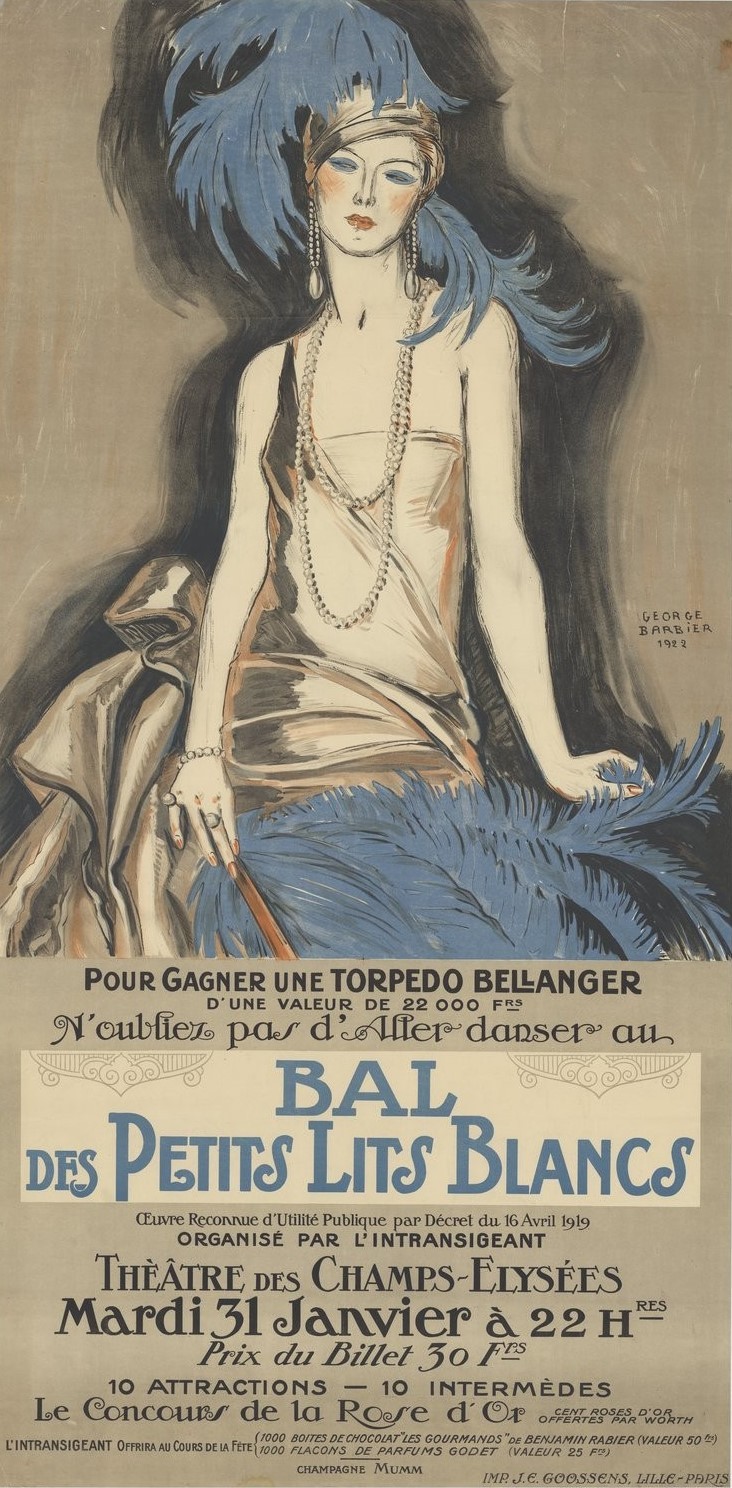
George Barbier, Pour Gagner une Torpedo Bellanger, N'oublitez pas d' Aller dancer au, Bal des Petits Lits Blancs, Theatre des Champs-Elysees, 1922.
#george barbier#illustration#poster#art deco#art deco poster#advertising#1920s#Bal des Petits Lits Blancs#20s#vintage#Theatre des Champes-Elysees#opera#art#barbier#flapper#torpedo bellanger#dance#ball#ball dance#Champs-Elysees#paris
289 notes
·
View notes
Text



Princess Grace of Monaco with Prince Bailly Guy de Polignac at the Knights of Malta gala at the Champs-Elysées theater in Paris on April 11, 1967.
#grace kelly#princess grace#knights of malta#order of malta#champs elysees theatre#paris#1967#april 11#prince bailly guy de polignac#bailly guy de polignac
7 notes
·
View notes
Text

1928-30 c. Poster for Vera Nemtchinova at the Theatre des Champs-Elysee. From Art Deco, Avant Garde and Modernism, FB.
73 notes
·
View notes
Text



ALIX AYMÉ (1894 - 1989)
The Girl with the Golden Eyes, lacquer and gold leaf. Paysage Italien (Italian Landscape) L'enfant qui dort (sleeping child), lacquer on panel.
Alix Angele Marguerite Aymé was born in Marseille, France in 1894. She studied drawing and music at the Conservatory of Toulouse. After graduation, she moved to Paris where she became the student of Nabi Painter Maurice Denis. She collaborated with Denis in the paintings for the Theatre des Champs-Elysees and worked in the Studios of Sacred Art in 1919. In 1921 Aymé moved to Hanoi with her first husband and there she studied the fine art of silk painting and lacquer work. She also studied printmaking and produced numerous etchings and wood engravings. In 1925 she became an art professor in Hanoi at the French Lycee School. In 1926 she returned to Paris and was commissioned to illustrate “Kim” by Rudyard Kipling. In 1930 she returned to Asia to be commissioned by the Royal Family in Saigon to create a series of large scale murals in the palace depicting rural life in Laos. These murals are still considered national treasures.
Aymé continued to work and travel throughout Indochina, India and Ceylon. She also painted in China, Japan, and Korea until she returned to Paris in 1945 after her son Michel was executed while her family was imprisoned by the Japanese in an internment camp. While in Paris in the mid-forties, Aymé was commissioned to do the Stations of the Cross for the chapel in Luc-sur-Mer and became close friends with the master painter and printmaker Foujita. In 1962 Aymé traveled to Brazzaville, Congo and continued to work until she died in 1989 on her 95th birthday. Her work can be found in the collections of the Louvre and the Musee des Trente in Paris, the Musee des Beaux-Arts in La Rochelle, and the Evergreen Museum at Johns Hopkins University in Baltimore as well as private collections in the United States and Europe.
#alix aymé#alix ayme#women in art#women artists#portraits#landscapes#portraiture#landscape#french artist#lacquer painting#art history
4 notes
·
View notes
Text

31 October 2012 | Prince Jean of Luxembourg and Monique Raimond, the wife of former French Foreign Minister Jean-Bernard Raimond, discuss prior to attending the 'Liege A Paris' Concert performed by the Liege Royal Philharmonic orchestra at Theatre des Champs-Elysees in Paris, France. (c) Pascal Le Segretain/Getty Images
2 notes
·
View notes
Text
The Devil Wears Gabriel - Chapter 16
A female radio host with a thick, Midatlantic accent sounded from the old-school static radio. "This is Nadja Chamack, coming live to you from Paris Radio Station. I'm gonna drop a dime, folks! We've got a jam at the Theatre des Champs-Elysees. Another akuma goon is throwin' an ing-bing. Don't get the eagers now! I'm sure the big cheeses are on their way to rough 'em up! Stay safe. Stay inside. Tune in for more news here on PRS." The radio clicked, leaving a static sound blaring in and out of the speakers.
Marinette groaned, "Lukaaaaa." Her face half pressed into her pillow, facing him. Her mind lingering between the real world and dreamworld. Sleepily with a raspy voice, she asked, "Can you turn down your phone? I'm trying to sleep."
Viperion chuckled, looking over Marinette's form. He shook her awake, nudging her with light pressure. "Mari."
Marinette grumbled into her pillow and nudged him away. Turning her head, she shot him a dirty look in the dark before nuzzling back into her pillow trying to go back to dreamland before the impending doom of her career came to an abrupt end.
Viperion shook his head staring down at his girlfriend and swiped his hand over his face. As he came up with an idea, a cartoonish lightbulb lit up above his head. He snapped his fingers, exclaiming, "Hot Dog!" Happy with himself, he walked over to the lamp on her bedside table and turned it on.
A bright light shone into her face, causing her to grimace. This made for an even grumpier Marinette. Opening her eyes, she grabbed his pillow, aiming at him to throw when... Hold the line - something wasn't quite right with his normal snake outfit. She did a double take on him, blinking the sleepiness from her eyes. His hair was slicked back under a boater's hat with a ribbon lining. He wore a pinstripe suit, vest and pants, with a bowtie and long sleeve button up shirt. Wingtip shoes in place of his teal, flat shoes.
And - Horsefeathers! Are those shoe spats? Not even her traditionalist 'that's not how it's done' grandfather would wear those! Those were popular a hundred years ago!
Finally, to put it all together, a shimmering, metallic mask sat around his eyes. It was strange how she could see his full mask now that his bangs had been pushed back. The small change accentuated the slit pupils in his eyes.
She had so many questions. Nothing but an akuma could possibly explain why her boyfriend became Harold Hill from The Music Man.
When Marinette fully came to after a moment, her eyes bugged out of her head as she took in the sight around her. Everything was in black and white, including them! She shivered, covering her arms as she felt a cold Spring breeze run through her. There's something off about the whole situation.
Marinette glanced around the room. Anything modern-day had been replaced with nineteen twenties decor and equipment. Instead of her normal cellphone on her bedside table, she saw a rotary phone. Their pictures had been replaced with various black and white old-timey sitting photos of the couple, friends and family. The dressers now made of unpainted, real wood instead of the faux wood exterior. The bedframe had a brass and iron detailing which was not there before. The black out curtains framing the doors to the balcony now were embroidered with little birds and flowers.
"This is balled up!" She spoke aloud, covering her mouth immediately after. "What did I just say?" A heavy MidAtlantic accent sounded from her which took her aback. Looking on the wall, she noted the time on the clock was 449. Only a couple of hours before she was going to be up. She leapt up from bed. "Applesauce! These akuma goons!" She cried. Maybe Hawkmoth wasn't a night owl, but he was a punk!
Viperion yelled back from the living room. A tinge of annoyance in his voice. "C'mon, Mare! Transform! Let's blouse!" He leapt out the balcony and headed toward the akuma without delay.
"I'm not a dewdropper! I'm coming!" Marinette huffed. "Tikki, spots on!" Looking down at her outfit, she had become another member of the early 20th century.
Staring at her feet, she noticed her shoes were two-toned Mary janes. She touched the edging of her flapper style dress, noting the material was chiffon. Gracefully, she ran her gloved hand down her elbow length sleeves. Spots were scattered throughout the dress, and black lace detailing trailed down on the outside of her sleeves, across her hips, and around her collarbone to her neck. A long, black pearl necklace hung around and down her neck past her bosom. With both hands, she touched her head and realized she was wearing a cloche hat. On her nape, even without a mirror, she could tell her hair was neatly styled in a chignon. Finally, she observed that her gloved hands were black with little black buttons along the sides. She ran her finger gently across the buttons on her right thumb.
"Goofy!" she breathlessly said. Nodding at herself and slowly acknowledging that this was actually reality. Touching her mask, she could feel sequins and little beaded details.
No, her mind wasn't playing tricks on her. This wasn't a dream.
Whoever this akuma was must really dig The Great Gatsby era.
On another note, why was the 1974 adaptation better than the 2013 adaptation? Maybe it was the song selection and accompaniments... Jay-Z and Fergie were certainly choices for the 2013 soundtrack. Did they really capture the time period of the Roaring twenties well? She'll have to debate this with Nino sometime; he'd give better insight into what albums and scores made for good movies.
She exclaimed, "Let's get moving!" Running out to the balcony and tossing her yo-yo in the air toward the theater where the akuma was spotted.
She arrived at the building overlooking the theatre across the street. She examined the team. Everyone seemed to be following the same jazz age dress code. Normally, they all had to be zapped to have an akuma affect them. This one must be exceptionally powerful - better keep her guard up. She didn't want a repeat of the last one. Subconsciously, wringing her hands together, she remembered the throbbing aches in her hands that she gets from time to time. Not sending her magical cure to fix the akuma damages has lasting effects. She knew she took Tikki's magic for granted.
Viperion and the team were assembled and discussing the akuma - or at least, that's what she thought they were discussing.
The team were talking amongst themselves, but Viperion and Chat were in a scuffle of their own. Uh-oh! Walking up slowly and silently, Ladybug listened in.
Viperion's hands were balled into fists. "You know what?! I've been more than patient with you so far." He rattled off his issues, listing them one by one. "I've listened to your pining, your one hundred different nicknames for my girlfriend, your stupid puns, and your pompous attitude for too long. Your infatuation needs to end! You need to let her go."
"Or what?" Chat's relaxed, nonchalant question stirred Viperion's anger.
"I told you already. You can be replaced. Easily." He spit his words, taking a step closer to Chat. Nose to nose, he threatened. "Let. Her. Go."
Chat guffawed, bringing his hands to his cheeks in a mocking way. "Oh, dearie. Whatever shall I do? This is it, folks! Bimbo here is calling the shots. Spread the news! The snake's officially declared before us and the gods that he is the big cheese of the group." He snorted. Challenging V by straightening his shoulders, he boldly said, "Last time I checked, my Lady was in charge. Not you." Poking him in the nose. Gently taunting Viperion as a show of 'what are you going to do about it?'
"Yeah? Well, we're together, and you can't stand that she's mine. That she chose me." Viperion emphasized.
Chat shrugged, dusting his shoulders. "She won't be yours for long." Shooting Viperion a knowing look. "I know her. I also know how much better off she'd be with me. I've always known. But now? I mean, can you feel it?" Nothing happened. Chat took a deep breath, facing up to the sky. Exhaling loudly, a large, cocky grin on his face. "The time's finally right! And your days together are numbered."
-----------Continued on Link-----------
#lukanette#thedevilwearsgabriel#alternate universe#miraculous ladybug#prereveal ladynoir#ladynoir#roaring 20s#the great gatsby references#viperion#chat noir#marinette dupain cheng#akuma attack
2 notes
·
View notes
Text

On May 29, 1913, Igor Stravinsky’s Le Sacre du printemps (The Rite of Spring), performed by the Ballets Russes, premiered at the newly constructed Theatre de Champs-Elysees in Paris.
Even before the curtain was raised, the audience had begun to protest. What was this “deformed,” “demented” and atonal music? But once the dancing started—a jarring, contorted, and “almost bestial” kind of movement that no one had ever seen before—all hell really broke loose. “There were fistfights, stampedes, chairs knocked over,” writes Madison Mainwaring.
A lady took out her hatpin in order to stab the man next to her (who may or may not have been Jean Cocteau). The police had to be called in during intermission in order to take away forty of the audience’s more boisterous members. One of the double bass players in the orchestra reported that “many a gentleman’s shiny top hat or soft fedora was pulled down by an opponent over his eyes and ears, and canes were brandished like menacing implements of combat.” Brawls carried on into the streets and at least one duel was fought the next day.
“It’s not clear which elements of the performance caused the disturbance in the audience: Igor Stravinsky’s music or Vaslav Nijinsky’s choreography, Nicholas Roerich’s costumes, the set, the plot,” writes Catherine Nichols. (The ballet’s titular rite is that of a virgin being sacrificed to a pagan god in hopes of a bountiful harvest.) “It could have been the emergent effect of accumulation: Sergei Diaghilev [founder and impresario of the Ballets Russes] had gathered these artists to work on it together because he was interested in Richard Wagner’s Gesamtkunstwerk—a plan for the theater to unite the arts to create a single, totalizing impression in the viewer.”
In the roiling, raucous opening night audience was Marcel Proust (also Gertrude Stein, Pablo Picasso, Claude Debussy, and Maurice Ravel), though it is difficult to imagine him being horrified by such ecstatic artistic experimentation. Swann’s Way, the first volume of Proust’s own masterpiece In Search of Lost Time, was due to be published in November. More likely, he understood exactly what Stravinksy and Nijinsky were up to.
“As literary modernism seemed to be about stripping away the pleasures of the Victorian novel, making text simpler and more minimalist, Proust was going in the other direction, writing the most descriptive possible novel,” writes Nichols.
He doesn’t seem interested in the mechanization of industry, the alienation of workers, or the new uses of language associated with slick, machine-made objects. He seems out of step with the other trends of literary modernism, but in the context of Gesamtkunstwerk, his project makes sense in its time. While Proust was publishing In Search of Lost Time, the 20th century was only at the beginning of its taste for totalizing aesthetics—a separate cultural strand from the taste for simplicity, but equally modern.
Both The Rite of Spring and In Search of Lost Time would become revolutionary works of modernism, their influence directing the course of art for decades; perhaps one did not influence the other, but nor was it, exactly, a coincidence. According to legend, after the disastrous premiere, Stravinsky, Diaghilev, and Nijinsky had dinner at Larue, where they were joined by Proust and his frenemy Jean Cocteau. “At two o’clock in the morning, Stravinsky, Nijinsky, Diaghilev and myself piled into a cab and were driven to the Bois de Boulogne,” Cocteau wrote.
We kept silent; the night was cool and clear. The odor of the acacias told us we had reached the first trees. Coming to the lakes, Diaghilev, bundled up in opossum, began mumbling in Russian. I could feel Stravinsky and Nijinsky listening attentively and as the coachman lighted his lantern I saw tears on the impresario’s face. … You can’t imagine the gentleness and the nostalgia of these men, and no matter what Diaghilev may have done later, I shall never forget, in that cab, his great tear-stained face as he recited Pushkin in the Bois de Boulogne.
2 notes
·
View notes
Text
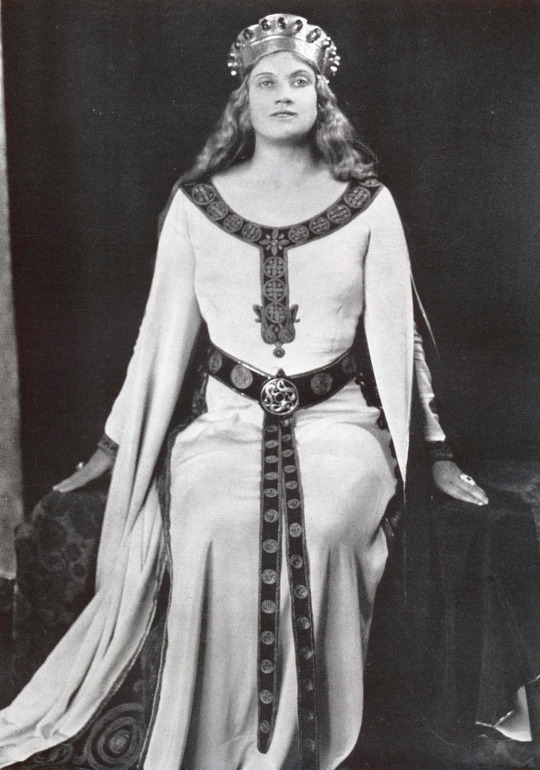
Dramatic Soprano Elisabeth Ohms was born on 17 May 1888 in Arnheim in The Netherlands. Her interest in music was evident at an early age, when she began studying violin and piano playing. She did not turn to singing until she was 28, getting her training at the conservatory in Amsterdam and in Frankfurt am Main. Her first engagement was at the Stadttheater in Mainz, but after just two years she joined the company of the Munich State Opera, where she remained for two decades. With Munich as a base, she went on extensive guest tours all over the world. One of her admirers was Arturo Toscanini, under whom she sang Kundry and Isolde in 1927 and 1929 at La Scala in Milan; another was Richard Strauss, who was especially enthusiastic about her Isolde. lt goes without saying that this fine Wagner soprano was heard in Bayreuth, too; Toscanini asked for her as Kundry when he conducted "Parsifal" for the first time there in 1931. Her appearances at the Metropolitan Opera in 1930 and 1931 were outstandingly successful. As an exception, she began with "Fidelio"; then came the Brünnhildes in the Ring, Ortrud and Venus, and finally, to crown her work there, Isolde. After these years of international successes, Elisabeth Ohm limited her sphere of activities to Munich, where she performed only rarely and ended her stage career in 1942. She then resided in Marquartstein, where she died on 16 October 1974. Gertrud Bindernagel was born on 11 January 1894 in Magdeburg. She studied at the conservatory in her home town and was only 17 when she was engaged by the local Stadttheater as a practical trainee. From 1913 to 1917 she continued her studies at the College of Music in Berlin. After finishing them she went to the opera house in Breslau, where she stayed until 1919. In 1919-20 she was with the Regensburg Stadttheater. From 1921 to 1927 she was a member of the company of the Berlin State Opera, where she scored enormous successes in a repertoire ranging from Nedda in "I pagliacci" to Isolde. From 1927 on, Gertrud Bindemagel was heard mainly at the Städtische Oper in Berlin; guest tours took her to Barcelona, Hamburg, Munich, Vienna and Mannheim. Following a performance of "Siegfried" at Berlin's Städtische Oper she was shot by her husband under the arcades of the opera hause. Domestic quarrels had led to the attack, from which she did not recover. She died of complications on 3 November 1932. Marta Fuchs, the celebrated high dramatic soprano of the 1930s and 40s, began her career as an alto in concerts. Born on 1 January 1898 in Stuttgart, she made her opera debut, after five years of concert work, at the Stadttheater in Aachen, still as an alto. Only in the course of her next engagement - with the Dresden State Opera beginning in 1930 - was her voice transformed into a high dramatic soprano. After 1935 she was also a member of the Berlin State Opera company and went on to become one of the most famous Wagner sopranos of the time. In 1933 she was already singing at the Bayreuth Festival, and until 1942 she was hailed by audiences there as Isolde, Kundry and especially Brünnhilde. In 1933 and 1935-37 she took part in Wagner performances in Amsterdam. In 1938 she sang Isolde at the Theatre des Champs-Elysees in Paris. In 1936 she was heard with the Dresden State Opera ensemble in London's Covent Garden as Donna Anna, the Marschallin in "Rosenkavalier", and Ariadne. In 1942 she was acclaimed at the Vienna State Opera. After 1945 Marta Fuchs lived in Stuttgart, giving only occasional guest performances and concerts. She died in Stuttgart on 22 September 1974. Anny Konetzni, bom on 12 February 1902 in Ungarisch-Weisskirchen, got her vocal training at the Vienna Conservatory, where her teacher was the renowned heroic tenor Erik Schmedes. Later she studied with Jacques Stückgold in Berlin. She began her singing career at the Vienna Volksoper (1925) with alto and mezzo roles, but the change to the big dramatic soprano parts was not long in coming.
#opera#classical music#music history#bel canto#composer#classical composer#aria#classical studies#soprano#Dramatic Soprano#Elisabeth Ohms#Ohms#La Scala#Teatro alla Scala#Metropolitan Opera#Met#Covent Garden#Royal Opera House#classical musician#classical musicians#classical history#historian of music#music theory#chest voice#diva#prima donna#maestro#Richard Wagner#Wagner#Paris Opera
12 notes
·
View notes
Text
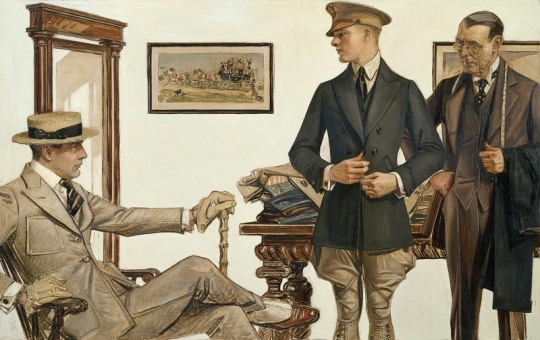
POST WWI AU ELECTRIC BOOGALOO
dion prob lives on or near the avenue montaigne and STILL takes a cab to the theatre des champs elysees
but when he does walk, he prob uses a vanity cane. bc he saw sylv do it in the 90s. ter refuses to get one in fashionable solidarity bc he prefers having both hands available tyvm
he hosts a party and little miss ward kihel is there, 16, and prepared to spite everything he stands for. shes like. dion theres someone in the red room doing tarot. u kno. in ur catholic household. they pulled me the sun card idk what it means
terence is into cubism. dion is like. please god keep that away from me
dion hasnt gotten over debussys death dont talk to him. this is the 3rd show today hes watched.
dion's family is v old money + rich off premium leather. tons of land out in the middle of nowhere to house animals. he sticks a mini aerodrome out there bc hes insufferably nostalgic and gets more than one biplane for himself
he never lacks for warm flying gear since they make it in house. sometimes if he's bored, he'll go hunting for the lining fur himself. ter often goes w him
ter's family is less well off after the war bc they were into like, luxury boats or smth, and no one wanted those bc of u-boats + material costs went to the war. he also bought himself a stupid plane.
#kihel sipping champagne across the room from them#bc they cant stop her#is honestly everything i need#brihamut's mercy#tedi wwi au
3 notes
·
View notes
Note
m8 this opera history book im reading makes gluck sound like the best thing since sliced bread and so now I want to get into gluck. where should I start in terms of his operas/productions?
AAAAAAAAAAAAAAA
ok. so out of all Gluck's work, i think the very best start is Orfeo ed Euridice, which was his first reform opera. The thing with Gluck is he was trying to reform from the Baroque era to the Classical era, so you can really see how the opera struggles to emerge from itself, i guess? As a result the music is Clsssical but serves Baroque sensibilities, and the characters are halfway between real people and representative of humanity or ideals as a whole.
Anyway, I always point to the Irish National Opera's production as THE BEST Orfeo ed Euridice I've seen so far (see the video below, lmk if you want a copy)
youtube
Almost all productions today are a mix of the Paris (french, Orfeo as a tenor) and Vienna (italian, Orfeo as contralto/countertenor) versions. Orfeo ed Euridice's story is at its core this overarching theme of love and it's able to bypass a lot of conventional gender roles because of how it's been changed and adapted throughout the opera's creation.
Other good productions (not necessarily fave takes) include the ROH/La Scala production with Florez, the Theatre des Champs Elysees with John Eliot Gardiner (both Paris versions), and the one with Jaroussky and Diego Fasolis (Vienna). I have a more extensive list here.
Once you're done with Orfeo ed Euridice, I'd recommend Alceste (Vienna version ONLY). It's also a reform opera and you start seeing how Gluck's getting the hang of the Classical era style of opera with focus on the story and characters over embellishments. It's dreary and dragging but it's worth it. Also you can hear how some orchestration influences Mozart later on. The only production with the Vienna version is the one by Teatro La Fenice.
Another great one is Iphigénie en Tauride/Iphigenie auf Tauris (though i'm not sure if it was still considered reform) and Echo et Narcisse.
Ultimately, I love Gluck's reform opera because of how much love is in them (i mean. Orfeo ed Euridice has this chorus called trionfi amore. literally love wins.). His music has its cracks and I've heard the criticism that he gives lazy happy endings but I think its very human and really shows how we got to Mozart from Gluck's reforms.
#i blacked out when i saw this and woke up again with this written already lol#/j#thanks for the ask!#malcolm-f-tucker#also if you dont mind sharing whats the book?👀
8 notes
·
View notes
Text
DIA 23 DE MAIO DE 2024 : DIA EXAUSTIVO MAS GRATIFICANTE NA GULBENKIAN ; VISITA À EXPOSIÇÃO “SIZA” , APRESENTAÇÃO DA TEMPORADA DE MÚSICA 24-25 E POR FIM O CONCERTO PARA PIANO E ORQUESTRA No 2 DE RACHMANINOV COM NIKOLAI LUGANSKY COMO SOLISTA ! : tudo começou com uma primeira visita à grande exposição sobre o premiado arquitecto português . O que a mim mais me fascinou foram os cadernos de desenhos . A montagem na horizontal dificulta a leitura e há que voltar face à massa de material exposto . Nem tempo tive de ir ao segundo núcleo e quando sai já estava uma enorme multidão aguardando entrada para a apresentação da temporada 24/25 . Em Portugal quando é grátis e há um croquete aumenta o interesse pela cultura.. . O gélido Risto disse breves palavras a introduzir o filme a um auditório apinhado . Quanto à temporada tem uma nova titular do Coro , tem qualidade mas é repetitiva - mais do mesmo . Hannu Lintu vai dirigir 10 concertos , Viotti dirige 3 ,os grandes intérpretes e os pianistas são os mesmos do costume mas o que espanta é a ausência de compositores portugueses ! .As iguarias do beberete eram excelentes mas o serviço pouco eficiente donde o acesso difícil excepto para as “aves de rapina “ treinadas nestes eventos .Veio depois o “Rach 2” Concerto para Piano e Orquestra n.º 2, em Dó menor, op. 18 de Rachmaninov com Nikolai Lugansky como solista. Em 2023, Lugansky assinalou os 150 anos do Nascimento de Rachmaninov com um ciclo de concertos no Theatre des Champs-Elysees, em Paris, e no Wigmore Hall de Londres.No verão regressou aos EUA para interpretar os Concertos para Piano de Rachmaninov, com a Orquestra de Cleveland.Com cerca de 1,90 metros de altura como o próprio Rachmaninoff, Lugansky possui uma força indomável destreza de dedos férrea e absorveu claramente o estilo interpretativo do seu compatriota .Como Rachmaninoff, o pianista aborda os temas líricos do concerto de uma maneira graciosa e equilibrada. Foi a profundidade e a eloquência, a qualidade orgânica de Rachmaninoff de Lugansky que distinguiu esta performance tanto quanto o músculo e o peso sonoro. Tudo parece emergir naturalmente do que veio antes, em vez de uma sucessão de explosões isoladas brilhantes, como em tantas outras leituras .O arsenal técnico de Lugansky é completo. O final foi emocionante - rápido, tocado com força e constantemente acelerando o tema lírico culminante .Os aplausos empolgantes trouxeram o pianista russo para várias chamadas inteiramente merecidas. Sai ao intervalo . A minha hérnia distal L5-S1 não acompanha a minha juventude de espírito estava cansado e depois do Rach 2 de Lugansky …..





0 notes
Text

C'EST DANS LA PRESSE | KAZUKI YAMADA
Kazuki Yamada était sur la scène du Théâtre des Champs-Élysées, les 25 et 26 janvier, avec l’Orchestre national de France et le Chœur de Radio France, dans un Carmina Burana aux « puissants effets qui ne manque pas d’impressionner le public du Théâtre des Champs-Élysées ».
« Les musiciens font déjà preuve d’une effervescence contrôlée, sous la direction dansante et élégante de Kazuki Yamada. Sa gestuelle active et souple parvient à impulser et à calmer dans le même temps les légères tentations de précipitation. Il se montre également particulièrement attentif au chœur pour Carl Orff. »
Lire le compte rendu complet 👉️ https://www.olyrix.com/articles/production/7341/carmina-burana-carl-orff-cantate-scenique-regula-muehlemann-soprano-matthias-rexroth-contre-tenor-ludovic-tezier-baryton-kazuki-yamada-orchestre-national-france-choeur-radio-maitrise-theatre-des-champs-elysees-26-janvier-2024-article-critique-compte-rendu
1 note
·
View note
Text
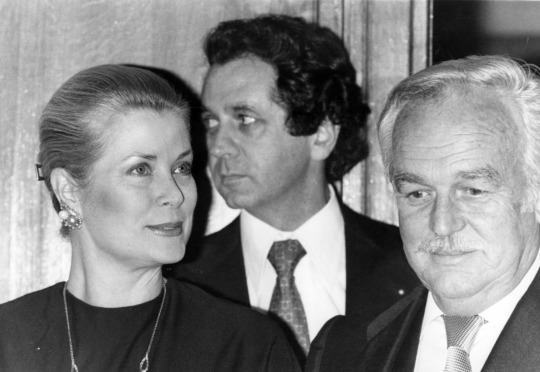
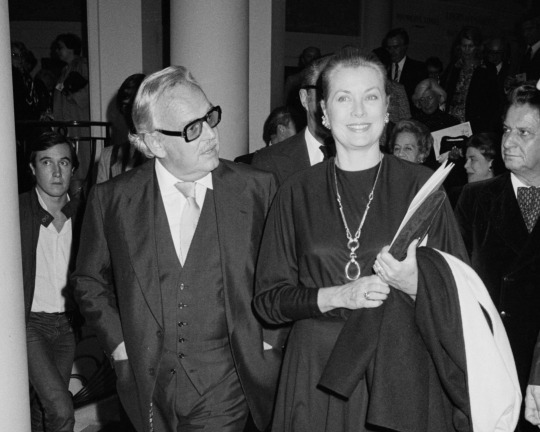
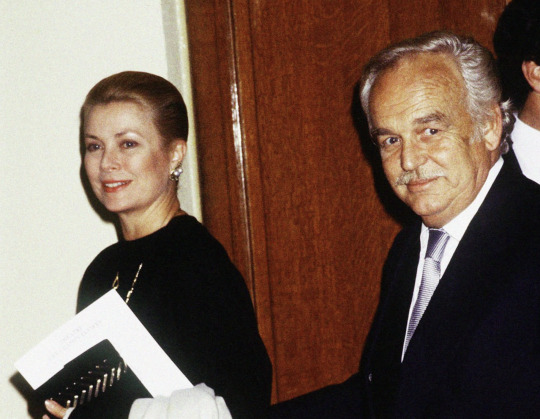
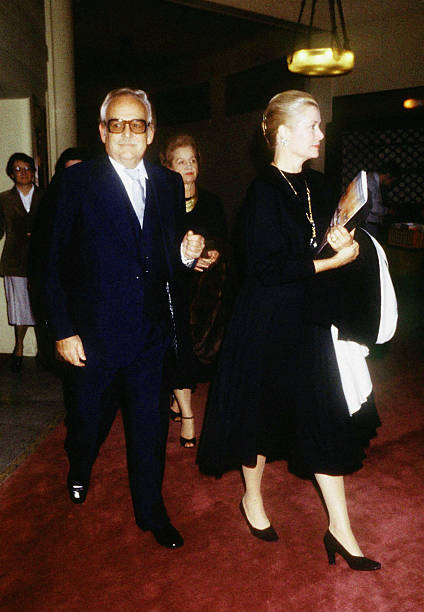
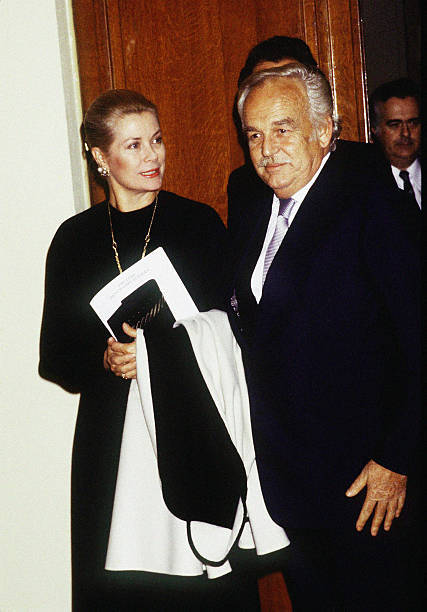

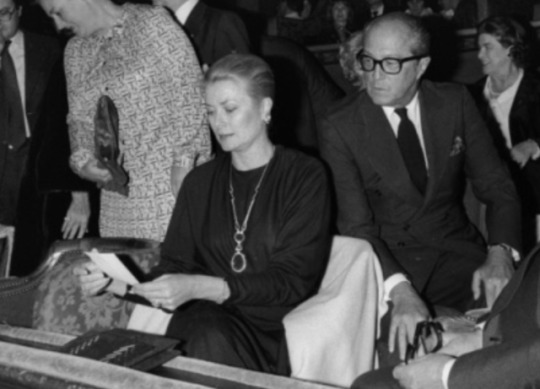
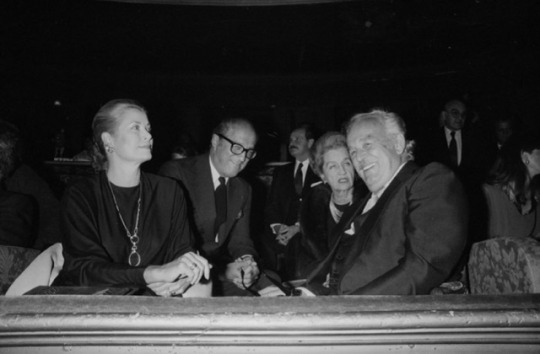
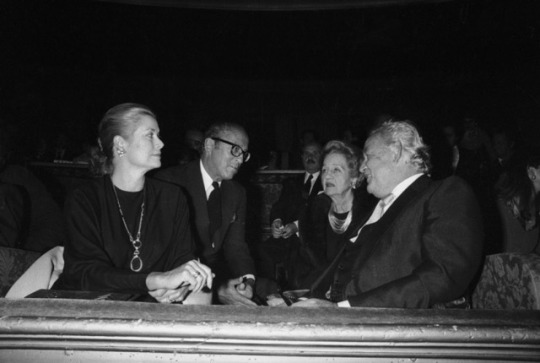
Prince Rainier and Princess Grace of Monaco arrive at Paris's Theatre des Champs Elysees on October 7, 1979, in Paris, France.
3 notes
·
View notes
Text
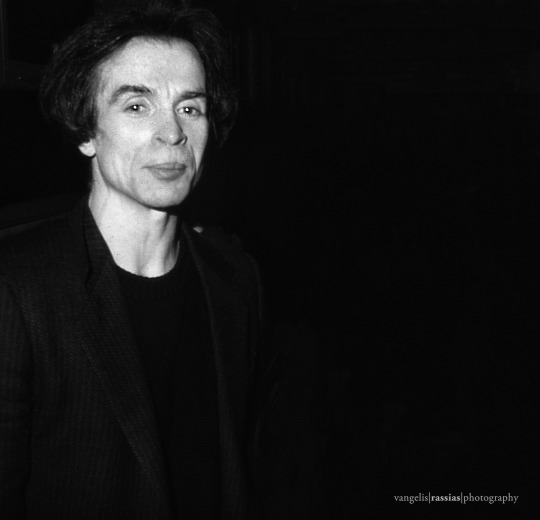
vangelis_rassias_photography
@rudolf_nureyev portrait Paris 1983 Σαν σήμερα...6/1/1993 πεθαίνει ο Rudolf Nureyev στο Παρίσι.Ηταν μόνον 54 χρονών... Τον γνώρισα στο Παρίσι στο Theatre des Champs Elysees. Eίχα την ''τύχη'' να τον δώ να χορεύει σε μια εξαιρετική solo performance.Ηταν 44 χρονών και θυμάμαι οτι άκουγα την ανάσα του απο την υπερπροσπάθεια που εκανε... '' Rudolf Nureyev fait se rencontrer l'école russe très technique et le style français à l'élégance racée. Il a avant tout respecté l'école française de danse et su y apporter de la théâtralité.''
#contaxrts#carlzeissplanar50mmf14#agfapan400#rudolfnureyev#dance#dancer#dancerlife#dancerstyle#famous#russian#art#director#operatheater#balletdeloperadeparis#blackandwhite
0 notes
Photo

Roger Waters Pink Floyd, Théâtre des Champs-Elysées, Paris France, January 1970. Photo by Philippe Gras.
#roger waters#pink floyd#theatre des champs-elysees#jan.1970#paris#france#philippe gras#my edit#my scan
142 notes
·
View notes
Text
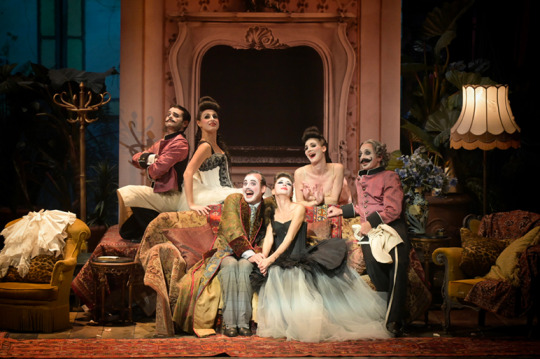
La Vie parisienne. Jacques Offenbach.
théâtre des champs élysées.
mise en scène, décors, costumes Christian Lacroix.
photo Vincent Pontet.
3 notes
·
View notes